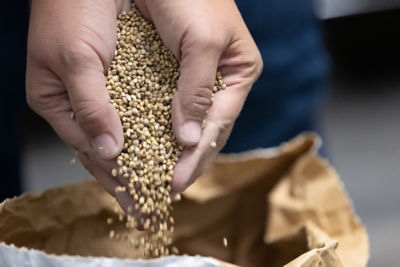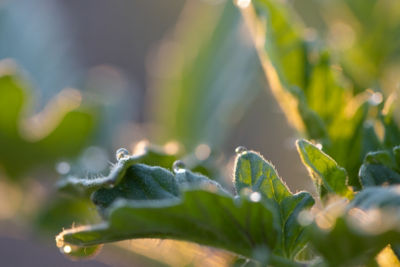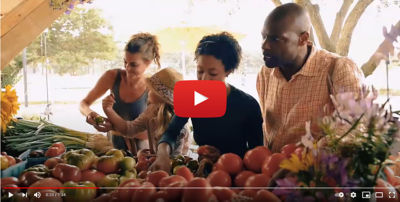Click here to download a PDF version of this spotlight.
» Tomato fruit cracking is usually the result of stressful environmental conditions.
» Fruit cracking is more common in the warmest parts of the growing season.
» Using crack-resistant varieties and maintaining even soil moisture levels can help manage the cracking of tomato fruit.
FRUIT CRACKING
Fruit cracking is a splitting of the fruit’s epidermis (skin) in the area where the fruit attaches to the stem.1 Cracking is usually caused by pressure within the fruit, associated with growth and water levels that stress the skin, causing it to tear.2 Cracking can occur in a pattern radiating from the stem scar toward the blossom end (Figure 1); this is called radial cracking. Concentric cracking is cracking that occurs in a circular pattern around the stem scar (Figure 2). Cuticle cracking, or russeting, is another type of fruit cracking that appears as small hairline cracks or a roughening of the fruit’s skin (Figure 3).1,3 All of these forms of fruit cracking develop on fruit that is nearing maturity, especially on fruit that is starting to change color. The skin becomes more flexible at this developmental stage, leading to higher pressures developing in the fruit and making the skin more likely to tear or split. Cracks initiated earlier often become deeper than cracks initiated on more developed fruit. The altered appearance reduces the marketability of the fruit, and the cracks can be sites of infection by fungi and bacteria, resulting in fruit rot.1,2,3

CAUSES OF CRACKING
Variations in fruit growth rates caused by fluctuating temperatures and hydration can result in cracking. A period of water stress, followed by a rapid influx of water and solutes, increases the incidence and severity of cracking.1,2,3,4 Periods of high temperature (over 86 °F) or when the difference between daytime and nighttime temperatures is greater than 36 °F can increase the likelihood of cracks developing, as high temperatures can increase fruit growth rate and skin firmness/ strength. Higher fruit temperatures can also cause higher hydrostatic pressure within the fruit, leading to cracking.1
These conditions can result in the immediate cracking of ripe fruit and delayed cracking of green fruit.1 Fruit cracking is most common when temperatures and light levels are at their highest for the season.
Factors that alter the growth rate and succulence of plants can also impact the level of cracking. High levels of nitrogen that promote succulent plants and rapidly growing fruit can result in higher levels of fruit cracking.3
The susceptibility to fruit cracking varies by cultivar. Genotypic differences in fruit cellular composition and skin structure affect susceptibility to cracking.1 More susceptible varieties may start to crack at the mature green stage, less susceptible varieties at the breaker (pink) stage, and more tolerant varieties at the red-ripe stage. Cracks do not usually develop on resistant varieties.3
Cracking is more common on large-fruited varieties because these fruits tend to have thinner skins with lower tensile strength and extensibility, and they often produce fewer fruit per plant.5 Fewer fruit can result in higher levels of soluble solids entering each fruit, which can lead to cracking. Factors that are associated with increased susceptibility to fruit cracking include:
● Large fruit size
● Low skin tensile strength
● Low skin extensibility at the breaker stage
● Thin skin and pericarp
● Few fruits per plant (low fruit load)
● Fruit not shaded by the foliage
● Higher juice content, acidity, and total sugar content
● Lower insoluble solid content1
A pair of dominant genes that determine resistance to concentric and radial cracking have been identified.1 Determinate varieties tend to be less susceptible to concentric fruit cracking. Indeterminate and semi-indeterminate varieties are more often susceptible to cracking, in part because they set fruit over a longer period, and thus tend to have fewer fruit on the plant at any given time.
MANAGING FRUIT CRACKING
To help manage fruit cracking, consider selecting crackresistant varieties if they meet the other required criteria for the market.1,5 Manage irrigation schedules to provide even water availability and avoid fluctuations in soil moisture levels.1,3,4
Prevent defoliation from disease in order to limit the exposure of fruit to direct sunlight that can result in increased fruit temperatures and temperature fluctuations.1,3 Proper stem pruning that minimizes fruit exposure to sunlight also helps lower the severity of cracking. Provide balanced nutrition, avoiding overapplication of nitrogen that can promote overly succulent plant growth and inhibit the uptake of other nutrients. Consider harvesting fruit before they reach the pink stage.1,5
SOURCES
1Olle, M. and Williams, I. 2017. Physiological disorders in tomato and some methods to avoid them. Journal of Horticultural Science & Biotechnology 92:223-230.
2Sperry, W., Davis, J., and Sanders, D. 1996. Soil moisture and cultivar influence cracking, blossom-end rot, zippers, and yield of staked fresh-market tomatoes. HortTechnology 6:21–24.
3Scott, J. 2014. Growth cracks. 2014. In Jones, J., Zitter, T., Momol, T., and Miller, S., Eds. Compendium of Tomato Diseases and Pests, Second Edition. American Phytopathological Society.
4Peet, M. and Willits, D. 1995. Role of excess water in tomato fruit cracking. HortScience 30: 65-68. Retrieved Jan 14, 2025, from https://doi.org/10.21273/HORTSCI.30.1.65.
5Peet, M. 1992. Fruit cracking in tomato. Hort Technology 2:216–223.
Websites verified 01/22/2025
ADDITIONAL INFORMATION
For additional agronomic information, please contact your local seed representative. Performance may vary, from location to location and from year to year, as local growing, soil and environmental conditions may vary. Growers should evaluate data from multiple locations and years whenever possible and should consider the impacts of these conditions on their growing environment. The recommendations in this article are based upon information obtained from the cited sources and should be used as a quick reference for information about vegetable production. The content of this article should not be substituted for the professional opinion of a producer, grower, agronomist, pathologist and similar professional dealing with vegetable crops.
BAYER GROUP DOES NOT WARRANT THE ACCURACY OF ANY INFORMATION OR TECHNICAL ADVICE PROVIDED HEREIN AND DISCLAIMS ALL LIABILITY FOR ANY CLAIM INVOLVING SUCH INFORMATION OR ADVICE.
6814_504400 Published 02/12/2025




